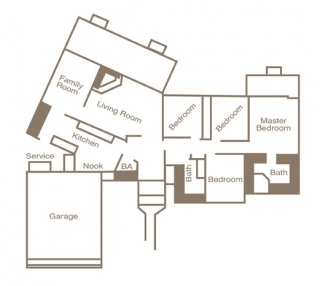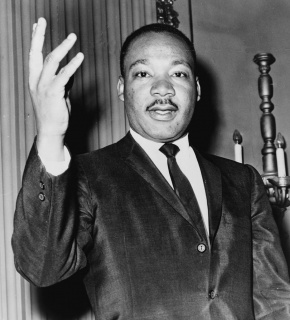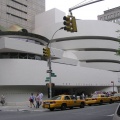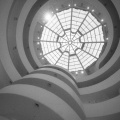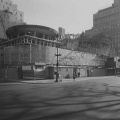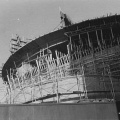Education | Timeline |
- 1829
- 1834
- 1840s
- 1848
- 1853
- 1859
- 1870
- 1870s
- 1871
- 1875
- 1877
- 1879
- 1880s
- 1882
- 1883
- 1884
- 1886
- 1887
- 1889
- 1890s
- 1891
- 1892
- 1893
- 1894
- 1895
- 1898
- 1899
- 1900
- 1900s
- 1901
- 1902
- 1904
- 1905
- 1906
- 1908
- 1909
- 1910
- 1910s
- 1911
- 1912
- 1913
- 1914
- 1915
- 1916
- 1917
- 1918
- 1919
- 1920
- 1920s
- 1921
- 1922
- 1923
- 1924
- 1925
- 1926
- 1927
- 1928
- 1929
- 1930s
- 1930
- 1931
- 1933
- 1934
- 1935
- 1936
- 1937
- 1938
- 1939
- 1940s
- 1940
- 1941
- 1942
- 1943
- 1944
- 1945
- 1946
- 1947
- 1948
- 1949
- 1950s
- 1950
- 1951
- 1952
- 1953
- 1954
- 1955
- 1956
- 1957
- 1958
- 1959
- 1960s
- 1960
- 1961
- 1962
- 1963
- 1964
- 1965
- 1966
- 1967
- 1968
- 1969
- 1970s
- 1970
- 1971
- 1972
- 1973
- 1974
- 1976
- 1979
- 1980
- 1992
Predicts Americans return to urban life
Speaking at the 1959 annual meeting of the National Society of Interior Designers, Williams predicts that in 10 years "people will start coming back to the city to live and will want a home designed around business and social activity." He describes the future of housing as revolutionary. The home of the 1970s ... "will possibly feature windowless walls on the street side with all rooms facing inward, and it would also have a filtered, circulating air system to escape the smog...". (Los Angeles Times, October 20, 1959)
This prediction for the future represents a change in consumer behavior from that previously described in his book New Homes for Today (1946). In this book, Williams predicted that the new homeowner would "buy ground farther from the city where lots are larger. This added area would allow space for family activities" ... and provide additional privacy.
A successful architect is always aware of changes in consumer behavior. This 1960s floorplan for the SeaView development illustrates how Williams redirects the living area of the home from the public street to the privacy of the backyard—what the new consumer wanted.
Community Service Center opens in Los Angeles
Los Angeles welcomes more than 500 new residents every day including 90 African Americans. To facilitate their search for housing and jobs, a Community Service Center opens on Western Street. The center is supported by the local Republican Party. Paul Williams chairs the Center's executive board. (Jet)
A Personal Message to You from Dr. Martin Luther King, Jr.
Jet advertisement, October 22, 1959
"I am proud to be a Director of International Opportunity because it is America's first integrated life insurance company. Working with me, and sharing this great experience in human rights, are Nat 'King' Cole, Jesse Owens, Paul R. Williams, Dr. M.C. Williams and many other great Americans—men who believe in equal opportunity for all people. Together—we are now able to bring to every family the protection and privilege of buying the very finest insurance..."
Stahl House, West Hollywood, California
In 2007 the American Institute of Architects (AIA) announces the list of America's 150 favorite architectural sites. The Pierre Koenig designed Stahl House is one of only a hand-full of California buildings to make the list. Originally commissioned in 1959 as a Case Study House, this 2,200 square-foot Hollywood Hills residence quickly becomes a Los Angeles icon. Photographs of the house are used in more than 1,200 newspaper and magazine articles and the residence is the setting for scores of movies and commericials.
Koenig designs the modern, steel frame and glass house for Buck Stahl, a former professional football player. Architect and athlete collaborate creating the client's dream—a home with a 270 degree "completely unobstructed view of the mountains to the sea." (Los Angeles Times, June 27, 2009) To provide an unobstructed view, Koenig uses the largest sheets of glass available in the 1950s, creating a house that seems to float in its environment.
Solomon R. Guggenheim Museum, New York
American millionaire Solomon R. Guggenheim establishes a foundation in 1937 to build and support a museum dedicated to preserving, promoting and exhibiting his collection of "non-objective" or "non-figurative" painting. Guided by his personal art advisor, Hilla Rebay, Guggenheim assembles one of 20th century's greatest private collections of modern masters including Calder, Mondrian and Kandinsky.
In 1943 Rebay contacts architect Frank Lloyd Wright to design a building in New York for Guggenheim's collection currently housed in a temporary space. Guggenheim, Rebay and Wright envision the new museum as a "temple of non-objective art," celebrating the avant-garde. A site is selected on 5th Avenue near Central Park.
Wright rejects traditional museum design and incorporates the organic forms of the Park into the museum's architecture. Architectural historian Matthew Drutt describes the design as melding Wright's interpretation of nature with "modernist architecture's rigid geometry." Drutt calls the building a "symphony of triangles, ovals, arcs, circles, and squares. Forms echo one another throughout."
The process of designing and building the Guggenheim takes many years. The museum is completed in 1959 after both the philanthropist and architect die. The building is a New York architectural icon though the design remains controversial. Many critics believe the architecture overpowers the art. Wright dismissed their criticism with, "On the contrary, it was to make the building and the painting an uninterrupted, beautiful symphony such as never existed in the World of Art before." The building is one of the most important of his late career.




